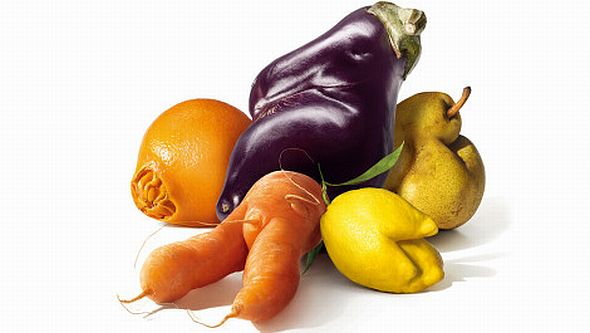“Gunders believes American consumers are far more open to odd-shaped produce than supermarket managers give them credit for. Sure, if given the choice between a great-looking tomato and a lumpy one, most might initially reach for the beauty queen. But enticed with a discount and presented with a light-hearted yet relevant social message, as Intermarché customers were, many will think twice.” L Galliot

Few things are more unappealing than a lumpy, bruised potato covered in sprouts. But leave it to the French to make it look sexy.
A campaign by the French supermarket chain Intermarché is on a mission to make shoppers see the inner beauty in scarred, disfigured, or otherwise odd-shaped fruits and vegetables. The message: Why throw away perfectly good produce just because it doesn’t meet arbitrary cosmetic criteria — especially when so many families can’t afford to eat the five daily portions of fruits and vegetables recommended by nutritionists?
“Now, you can eat five ‘inglorious’ fruits and vegetables a day. As good, but 30 percent cheaper,” says an Intermarché promotional video, trumpeting the virtues of the “the grotesque apple, the ridiculous potato, the hideous orange, the failed lemon, the disfigured eggplant, the ugly carrot, and the unfortunate clementine.” Here’s an English version of the video:
[youtube=http://youtu.be/p2nSECWq_PE&w=500]
The French are eating it up like chocolat. After Intermarché launched the campaign in March, it sold out of its ugly fruits and vegetables within the first two days, and saw a 24 percent increase in traffic in participating stores. Now it’s looking to expand the program to its 1,474 supermarkets all over France.
Unnecessary waste
We sure could eat more ugly veggies over on this side of the pond. A report by the Natural Resources Defense Council found that Americans toss a whopping 52 percent of the country’s fruits and vegetables — more than any other food group. A significant part of that loss occurs before the produce ever leaves the field.
